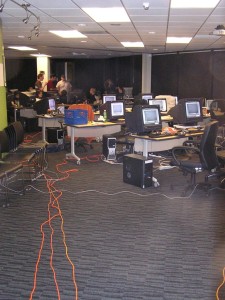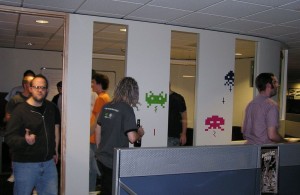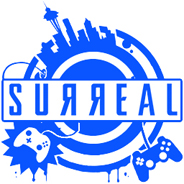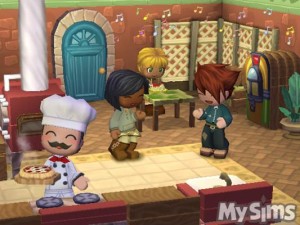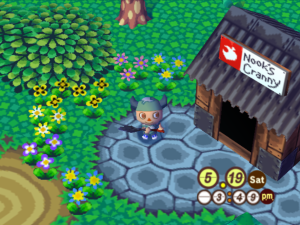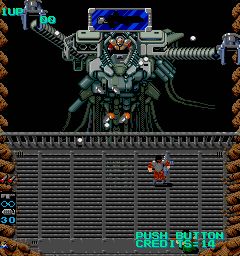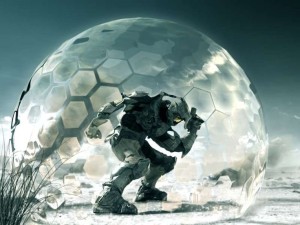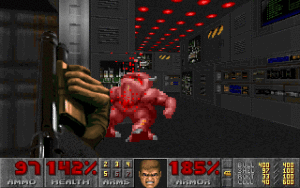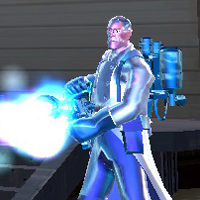I just noticed today that during my blogging hiatus, Citizen Parker had stumbled onto my posted Analysis of Diablo 2. It was a fun write, and a Parker had some really cool things to say about it. Thanks for the nod!
 A bit of history on this, I wrote it while I was in the midst of a job search. They had asked for an analysis of this sort for one of several games, including my fave, Diablo 2. I was uncomfortable revealing this at post time because it would have been unfair to reveal their hiring practices, but this was for the sadly-departed Iron Lore in Maynard, Massachusetts.
A bit of history on this, I wrote it while I was in the midst of a job search. They had asked for an analysis of this sort for one of several games, including my fave, Diablo 2. I was uncomfortable revealing this at post time because it would have been unfair to reveal their hiring practices, but this was for the sadly-departed Iron Lore in Maynard, Massachusetts.
At the time they were looking for a lead designer for their ultimately entertaining and polished Diablo-like game Titan Quest. I visited their studios in a cool old New England building, and met with folks like Brian Sullivan and Jeff Goodsill… It was a nice operation with what seemed like a great culture and feel, and it saddens me that they weren’t able to keep the money flowing. The public at large (and many developers) seem to forget how hard it is to have an independent studio these days… New IP is difficult to get attention for, and the game-buying public tends to pool their money on a few selected hits and ignore the rest.
Anyway, back to Diablo… It was kismet that they had asked me about that game not too long after I finished X-Men Legends. As you get done developing a game, you mind is filled with the choices you made, and all the things you could have done to make the game better. Sometimes it’s a struggle to close the book and move on, and it feels important to keep a log of what you’d do different if there was a next time.
God, my head was filled with stuff like this. X-Men Legends had an early start conceived as a turn-based RPG ala Final Fantasy before I evolved it into the real-time adventure that got released. Things get so clear after the fact, but in the midst of it we were struggling to get our new console technology going and iterating on AI. The XML really wasn’t fully playable (particularly having good companion AI) until pretty near the end of production. (Although I should say that the unstoppable Simon Parkinson really lived up to the challenge of making that whole package work together well). But, as even the mighty Penny Arcade has finally begun to understand, sometimes games play like shit until they are fun. It doesn’t happen with every project, but there are times when you just have to trust your instincts and carry out a plan.
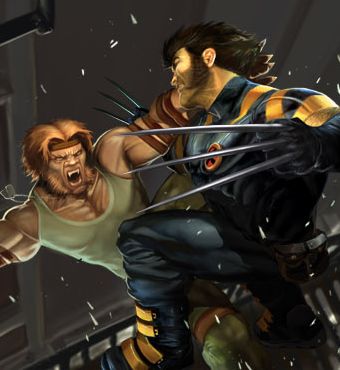 In the case of X-Men, there were a few things that dawned on me too late to really get into the design. The first was a smaller realization… For a good chunk of development we were looking for solid gameplay elements that took advantage of the various forms of elemental attacks that the X-Men used… Typically it was difficult because it was custom-scripted, and generally required one specific hero at the expense of all others in order to enact, which went up against our credo of letting the player choose their favorite X-Men and focus on them. However, after Harvey and Randy Smith’s excellent talk on emergence at GDC 2004, I came back to work all fired up about the possibilities of the interactions of objects with elemental properties and how they could create some unique gameplay. Creating more water that could be frozen or barrels that leaked flammable oil would have added a lot of variation to the X-Men’s activities, but the idea really came in too late to really act on. We were pretty much at alpha at that point and couldn’t take the risk. Ah well.
In the case of X-Men, there were a few things that dawned on me too late to really get into the design. The first was a smaller realization… For a good chunk of development we were looking for solid gameplay elements that took advantage of the various forms of elemental attacks that the X-Men used… Typically it was difficult because it was custom-scripted, and generally required one specific hero at the expense of all others in order to enact, which went up against our credo of letting the player choose their favorite X-Men and focus on them. However, after Harvey and Randy Smith’s excellent talk on emergence at GDC 2004, I came back to work all fired up about the possibilities of the interactions of objects with elemental properties and how they could create some unique gameplay. Creating more water that could be frozen or barrels that leaked flammable oil would have added a lot of variation to the X-Men’s activities, but the idea really came in too late to really act on. We were pretty much at alpha at that point and couldn’t take the risk. Ah well.
The second inspiration I got, however, came nearly at the very end of the game, as we were doing final tuning. For so long, we had been chasing the dragon of encouraging the player to switch characters. Ostensibly this was to support the X-Men chestnut of “combo attacks” like the Fastball Special. These would have, ironically, been a breeze if we had stuck with the turn-based Final Fantasy model, but they were really hard to implement and control in the chaotic environment of a real-time, multiple-enemy brawler. Anyway, switching characters with the D-Pad was a great combat option that existed, but generally any one character was powerful enough to deal with any challenge. As it was still a bit disorienting to do a lot in battle (and a bit inconvenient because of the use of the D-pad), the player usually just switched for variety and flavor.
What was apparent to me right at the end of development (not that it was a revelation) is that using powers were always going to be the most exciting thing, because that’s where we lavished the most love and custom effects. The unique opportunity that existed in X-Men Legends, however, was that there were four characters that were usable most of the time. So, while in other games you shoot your wad and drain yourself of power, then go off and recharge or drink a potion or something, our players could continually switch characters and use that character’s powers while the drained character was busy recharging. As such, we could have introduced a mechanic that encouraged the player to keep a power chain going, rewarding them for using power after power, ultimately reinforcing the fun that should exist with all these extravagant powres going off. I think that would have completely cemented the “team” feel and brought the game beyond just being a multi-character elaboration on Baldur’s Gate Dark Alliance (and I make no claims that we don’t owe that game a great debt).
Of course by then the game was nearly out the door, and I was gearing up to move on to new opportunities. I feel a bit sad that we weren’t able to get that sort of thing in, but since that game has spawned two successful sequels built on the same mechanics, I guess I can’t complain. It just proves that there is always one more feature, one more bit of polish for every game you work on. You can either kill yourself over it, or just save those ideas for next time…
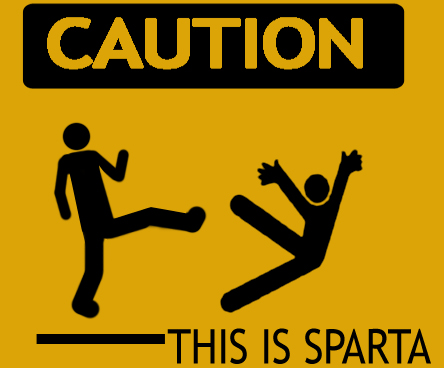 Over the past few weeks there have been a bunch of great references to This is Vegas. Forgive me while I plug them for a minute. 🙂
Over the past few weeks there have been a bunch of great references to This is Vegas. Forgive me while I plug them for a minute. 🙂
 A bit of history on this, I wrote it while I was in the midst of a job search. They had asked for an analysis of this sort for one of several games, including my fave,
A bit of history on this, I wrote it while I was in the midst of a job search. They had asked for an analysis of this sort for one of several games, including my fave,  In the case of X-Men, there were a few things that dawned on me too late to really get into the design. The first was a smaller realization… For a good chunk of development we were looking for solid gameplay elements that took advantage of the various forms of elemental attacks that the X-Men used… Typically it was difficult because it was custom-scripted, and generally required one specific hero at the expense of all others in order to enact, which went up against our credo of letting the player choose their favorite X-Men and focus on them. However, after
In the case of X-Men, there were a few things that dawned on me too late to really get into the design. The first was a smaller realization… For a good chunk of development we were looking for solid gameplay elements that took advantage of the various forms of elemental attacks that the X-Men used… Typically it was difficult because it was custom-scripted, and generally required one specific hero at the expense of all others in order to enact, which went up against our credo of letting the player choose their favorite X-Men and focus on them. However, after 


